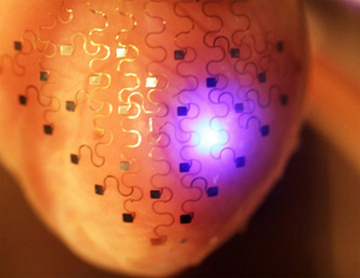
Canadian “Heart Sock” could become Pacemaker replacement
Mike McLeod
Electronics Materials Medical slideshow University of AlbertaFlexible, sensor-laden sleeve could help doctors pinpoint heart trouble and inform treatment.
Chung, in partnership with John Rogers of the University of Illinois, embedded 68 sensors – that monitor temperature, strain and pH — into a silicone sheet that fit a 3D-printed replica of a rabbit heart. The circuits’ serpentine design allows them to stretch with the elastic membrane without permanently deforming.
According to the researchers, the key feature of their “heart sock” is that the custom tailored fit allows for a detailed analysis of the metabolic, thermal, mechanical and other vitals but without restricting the heart’s normal function. In this way, the synthetic membrane could help clinicians pinpoint areas where heart conditions like arrhythmias are originating and inform possible treatment.
In the next stage of development, the team intends to introduce heartbeat regulating electrodes and potentially find methods of dissolving the sleeve once its work is done, as well as looking at ways to power the electrodes.
The research teams co-authored articles were recently published in Nature Communications and Advanced Healthcare Materials.
www.ualberta.ca


